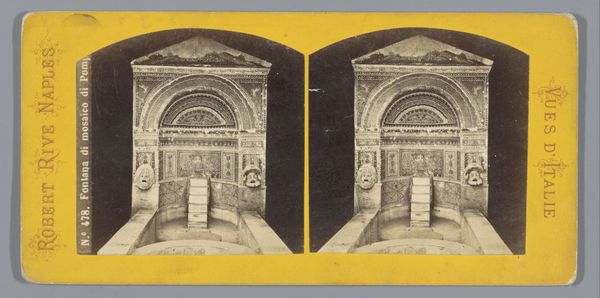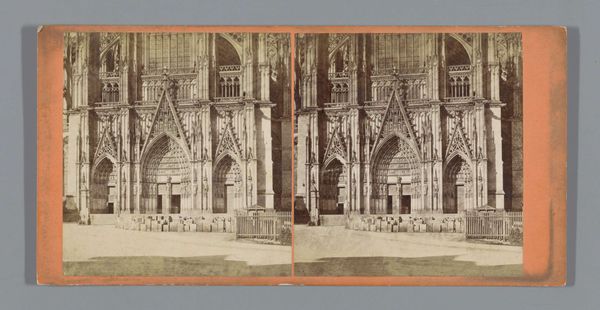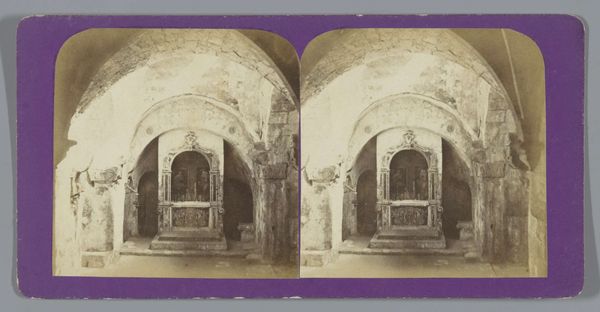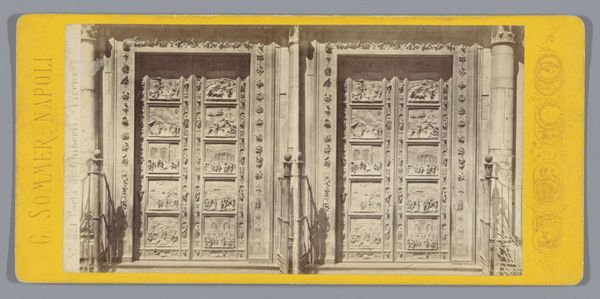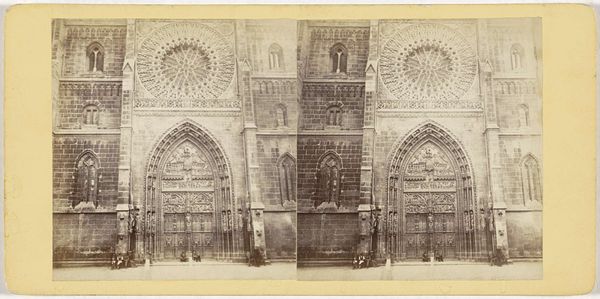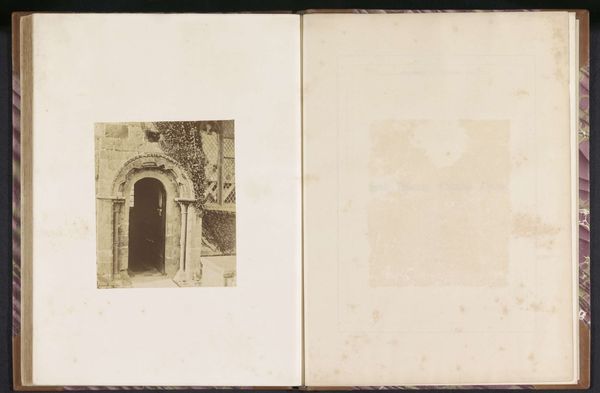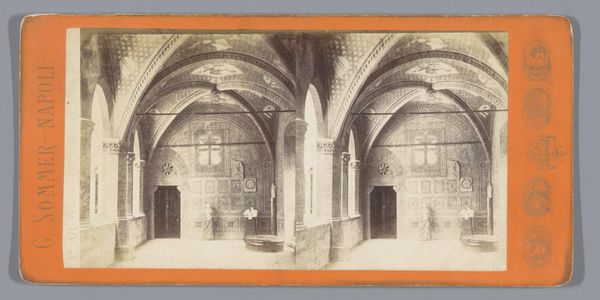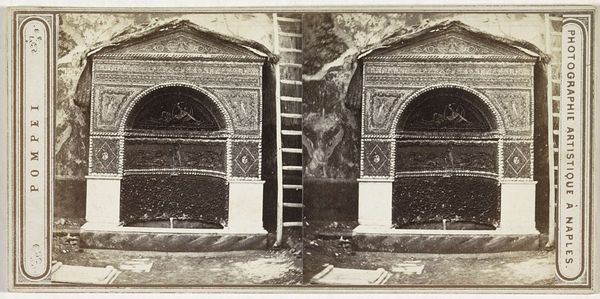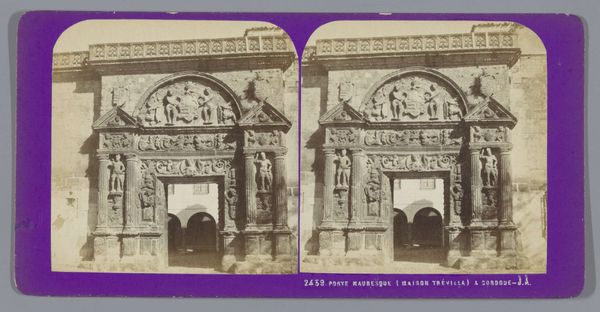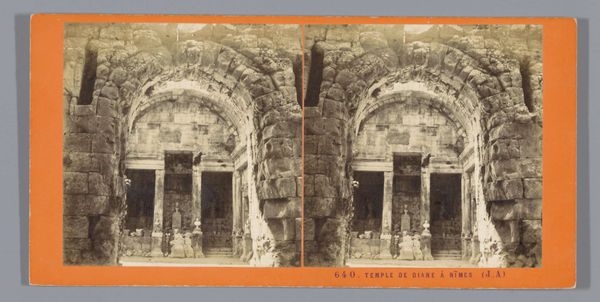
print, photography, gelatin-silver-print, architecture
# print
#
landscape
#
photography
#
romanesque
#
gelatin-silver-print
#
architecture
Dimensions: height 85 mm, width 170 mm
Copyright: Rijks Museum: Open Domain
Editor: This is a gelatin silver print from somewhere between 1850 and 1880, titled "Portal of Ely Cathedral." It was taken by Alexander Wilson. There is a powerful symmetrical stillness to it that draws my eye. How do you interpret the structural and material qualities here? Curator: Immediately, the photograph's strength lies in its almost geometric balance, wouldn’t you agree? Notice how the photographer has emphasized the detailed carvings and the heavy wooden door, elements that dictate both texture and form. Editor: Yes, absolutely. The repetition of shapes and patterns seems integral to its construction. It's as if the entire portal is a carefully constructed equation. Is this typical of this style of photography? Curator: More than just stylistic conventions, the gelatin silver print, particularly in this period, had the capacity to capture tonal nuances that earlier photographic processes often missed. The gradations from the brightest highlights on the stone to the deep shadows within the carvings allows a much more thorough, complete vision. But let's consider how the photographer positions us, the viewers. Editor: I notice there’s something quite powerful about the perspective. The architecture's verticality seems enhanced by the photograph’s tight framing. This emphasizes its monumentality. Does this contribute to the photograph's aesthetic impact? Curator: Precisely. And consider this is a stereoscopic image, designed for viewing with a special viewer, it suggests a more fully dimensional effect than a normal photograph. By understanding the physical structure and surface details, as highlighted by the light and shadow, it becomes clearer what the photographer intended for the viewer’s embodied experience. Editor: So it’s not just a picture, but a structured encounter with architectural form? That changes my perception entirely. Curator: Indeed. By concentrating on formal composition and how that affects the viewer, we gain insight not just into photography but the essence of three-dimensional architectural experience.
Comments
No comments
Be the first to comment and join the conversation on the ultimate creative platform.

